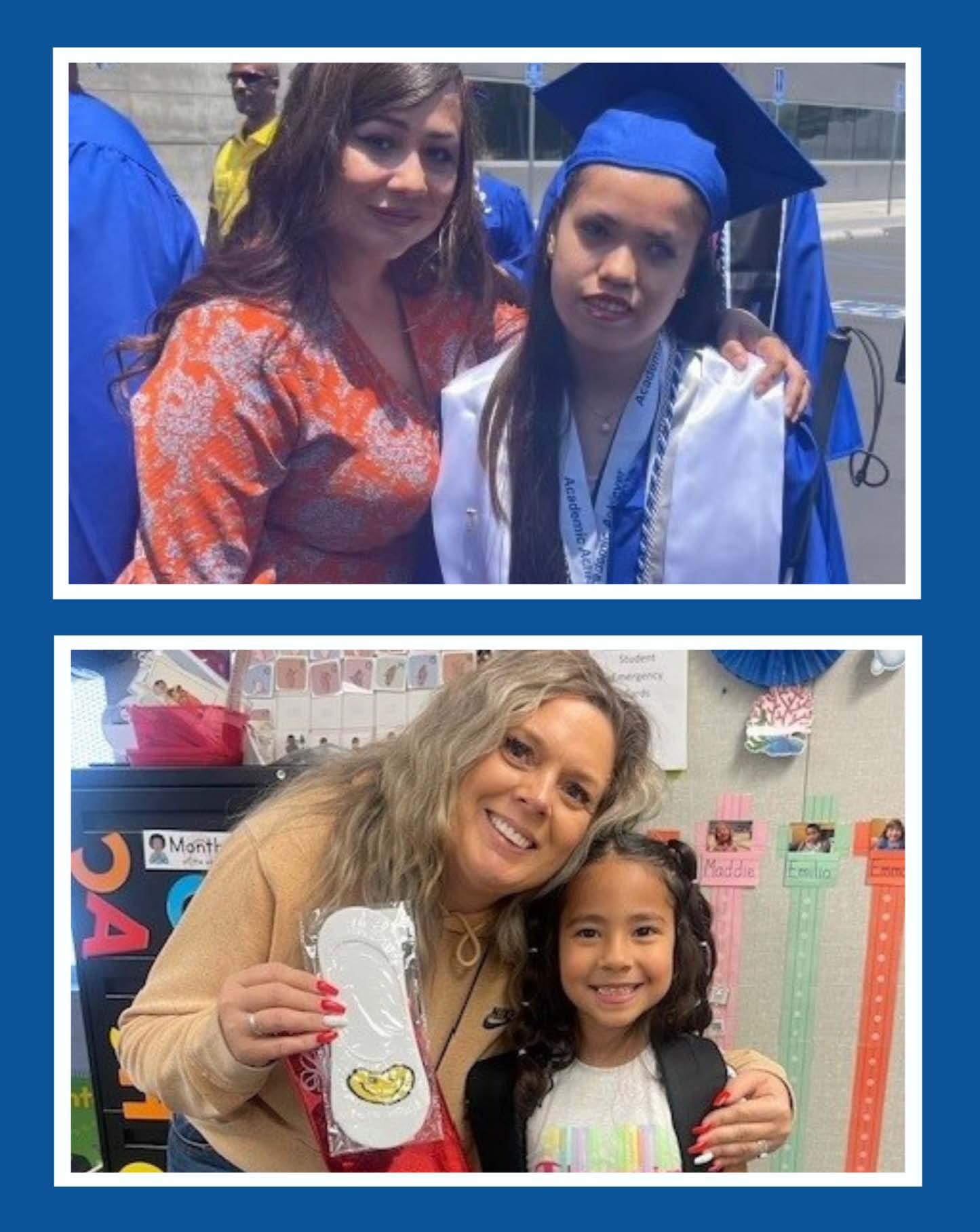
Leticia Ceja, top, and Jenny Becerra, bottom, were both awarded a Local Solutions grant from the Commission to help with the cost of education required to become a special education teacher.
Nearly 4,000 new special education teachers are working in school districts across California thanks to the success of a four-year grant program funded by the state and administered by the California Commission on Teacher Credentialing.
The Local Solutions to the Shortage of Special Education Teachers Grant, financed in the 2018-19 state budget, authorized up to $50 million for competitive grants for school districts to design and implement local solutions to address the shortage of special education teachers. These included strategies to identify, recruit, prepare, employ, and support aspiring and newly credentialed special education teachers.
Data from the Commission’s final Local Solutions report to the Legislature show that 82% or 3,906 of the 4,743 participants have been hired or are on track to be hired as special education teachers across 41 local education agencies.
In the San Bernardino County Superintendent of Schools (SBCSS), the Local Solutions grant attracted 83 aspiring special education teachers, including Jenny Becerra, who worked as an instructional aide for over two decades.
With financial assistance from the Local Solutions grant, Becerra recently earned her bachelor’s degree in Early Childhood Special Education from the University of La Verne, and her master’s degree and teaching credential in Special Education from Cal State San Bernardino.
“The grant was such a blessing to me because having kids, working as an assistant and working in California with all the costs, I really thought that I could never do it,” said Becerra, who also was awarded SBCSS Teachers for Tomorrow and California Classified School Employees Teacher Credentialing Program grants.
“Definitely these grants are what motivated me. I knew that if I can get approved for these and get help paying for it, I just have to do the rest.”
Becerra is now a special education teacher for preschool and kindergarten students in Hesperia located in the high desert, an area with some of the highest need, according to Supriya Barrows, human resources special projects manager.
“We continue to see an increase in students with special needs in all program areas for the 33 districts we serve, especially in our high desert and mountain communities,” said Barrows.
“We serve the most vulnerable and medically fragile students, each with complex needs that require the highest level of expertise and specialized care. This grant funding was crucial, aligning with the SBCSS mission to transform lives through education. It empowered us to cultivate exceptionally skilled educators, creating an innovative funding pathway to obtain the necessary education and credentials to undertake this vital work.”
In the SBCSS east valley region, a passion for helping educate students who are visually impaired inspired Leticia Ceja to apply for the Local Solutions grant.
Ceja’s journey as an educator began 10 years ago as a Braille Specialist for a preschool student named Jacqueline who was visually impaired. The two formed a lasting bond that has a special place in Ceja’s heart and helped shape the trajectory of her career.
“As my student was learning Braille, I was learning Braille. I studied in the classroom with her and took some of the books home. I also borrowed a Braille writer and asked if I could volunteer to help produce Braille,” said Ceja who recently earned an education specialist credential in visual impairment from Cal State LA.
Ceja attended Jacqueline’s high school graduation and remains an encouraging presence as she pursues a college degree.
“When you see students have even a small success, it’s something that makes you very proud,” she said. “If we had more special education teachers, I feel like our students would succeed even more and have a higher rate of graduating and going to college.”
Ceja is now a teacher for the visually impaired for students ranging from birth through age 22. She credits this accomplishment to having received the Local Solutions grant as well as funds from the SBCSS Teachers for Tomorrow and California Classified School Employees Teacher Credentialing Program.
“Grants make a difference. It’s very expensive so a lot don’t have funds, but knowing that we can rely on a grant like this, it helps us to want to join the credential program,” said Ceja.
Legislation provided up to $20,000 per participating teacher to assist with expenses related to earning a special education credential, including tuition, stipends, signing bonuses, and induction. Awardees must agree to teach at a school located in their jurisdiction for at least four years.
“With this support and the partnership with CTC, we're not just elevating educational standards; we're nurturing a generation of teachers who are uniquely equipped to make a transformative difference in the lives of our students," Barrows said.
For more information on current grant opportunities, visit the Commission’s website.
.png?sfvrsn=c28b72b1_10)
.png?sfvrsn=cd8b72b1_0)